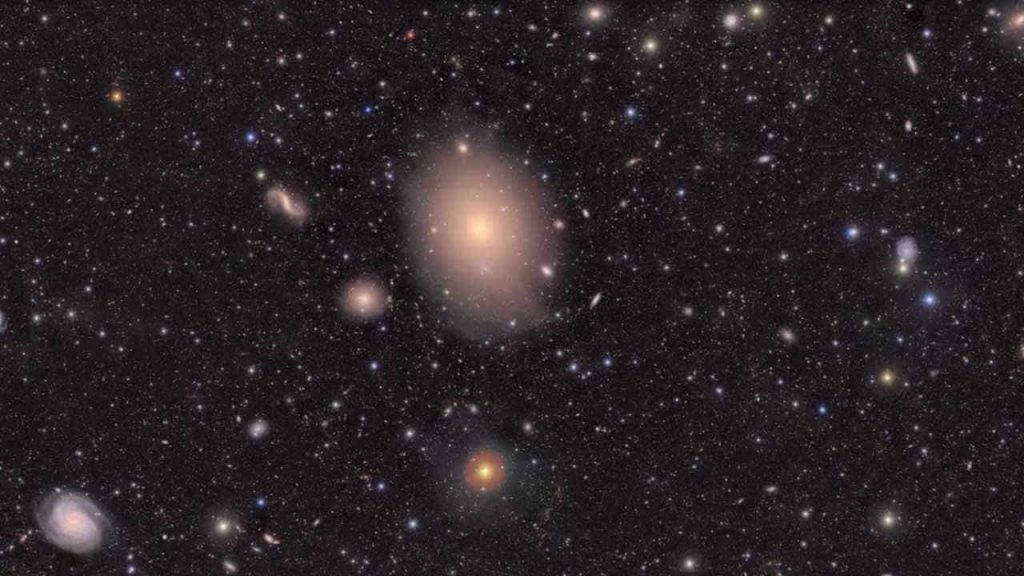The Vera C. Rubin Observatory has made headlines with the release of its first images, taken by the world’s most powerful digital camera. Located on Cerro Pachón in Chile, this state-of-the-art camera is expected to revolutionize our understanding of the universe. Following years of meticulous planning and construction, the observatory is officially operational, offering unprecedented views of the cosmos.
| Article Subheadings |
|---|
| 1) An Overview of the Camera’s Features |
| 2) The Journey to Creation |
| 3) Initial Images: A New Perspective on Cosmic Phenomena |
| 4) Unlocking the Mysteries of the Universe |
| 5) Implications for Future Discoveries |
An Overview of the Camera’s Features
The Vera C. Rubin Observatory’s camera boasts a remarkable 3.2-gigapixel sensor, composed of 201 individual imaging sensors. Each akin to a 16-megapixel camera, these sensors work together to produce ultra-high-definition images of cosmic phenomena. Designed for efficiency, this camera can execute quick 15-second exposures every 20 seconds, effectively capturing light across a diverse spectrum from ultraviolet to near-infrared. This capability allows scientists to observe events and structures in the universe that were previously beyond the reach of traditional telescopes, marking a significant leap forward in astronomical observational technology.
The Journey to Creation
The ambitious project to create this groundbreaking camera began over two decades ago under the auspices of the U.S. Department of Energy’s SLAC National Accelerator Laboratory. Initial designs were shared with the public in 2015, and the camera assembly was finalized by 2020. After further refinements, the manufacturing process concluded in early 2025, culminating in the installation of the camera on the Simonyi Survey Telescope in March 2025. This successful collaboration between international teams signifies a major accomplishment in the realm of scientific infrastructure.
Initial Images: A New Perspective on Cosmic Phenomena
The debut images captured by the new camera present stunning views of the Trifid Nebula and Lagoon Nebula, taken over an extensive seven-hour observation period. These first snapshots are not just aesthetically pleasing but also reveal intricate cosmic details that were previously indistinguishable to the naked eye. In just ten hours of preliminary testing, the observatory managed to photograph millions of galaxies, numerous stars, and thousands of asteroids, paving the way for the much-anticipated 10-year Legacy Survey of Space and Time (LSST).
Unlocking the Mysteries of the Universe
Beyond its capability to capture breathtaking images, the Vera C. Rubin Observatory is set to collect an unprecedented amount of data in its first year—more than all existing optical telescopes combined. This data will be pivotal for scientists as they explore dark matter and dark energy, two enigmatic components that constitute the majority of our universe but have remained largely unexplored. Furthermore, by discovering millions of new asteroids and comets, the observatory will contribute to advancing our understanding of the solar system and fortifying planetary defense mechanisms against potential cosmic threats.
Implications for Future Discoveries
The ramifications of this advanced camera and observatory extend far beyond mere astronomical photography. With its capability to scan the entire sky of the Southern Hemisphere every few nights, the Rubin Observatory aims to create a detailed time-lapse archive of the universe. This wealth of data will serve as a foundational resource for years to come, stimulating fresh research initiatives and driving critical discoveries that could reshape our comprehension of cosmic phenomena.
| No. | Key Points |
|---|---|
| 1 | The camera has a 3.2-gigapixel sensor comprising 201 individual sensors. |
| 2 | The project began over 20 years ago with a variety of international collaborators. |
| 3 | First images include impressive details of the Trifid Nebula and Lagoon Nebula. |
| 4 | The observatory aims to collect more data in its first year than all existing optical telescopes combined. |
| 5 | It will significantly enhance research on dark matter and dark energy. |
Summary
The Vera C. Rubin Observatory and its groundbreaking camera represent a significant advancement in astronomical technology, poised to enhance humanity’s understanding of the universe. As it begins its decade-long observations, the potential for discovery grows exponentially, promising not only to unveil the mysteries of dark matter and energy but also to capture visualizations of previously unobservable celestial phenomena.
Frequently Asked Questions
Question: What distinguishes the Vera C. Rubin Observatory’s camera from traditional telescopes?
The Vera C. Rubin Observatory’s camera features a 3.2-gigapixel sensor that allows it to collect ultra-detailed images across a wide spectrum, capturing data at unprecedented speeds.
Question: How long has the camera been in development?
The development of this advanced camera has spanned over 20 years, involving numerous international collaborations and a series of engineering milestones.
Question: What are the expected outcomes of the Legacy Survey of Space and Time (LSST)?
The LSST aims to collect a vast amount of dynamic data that will enhance our understanding of cosmic structures, dark matter, and dark energy while also enabling the discovery of new celestial bodies.


